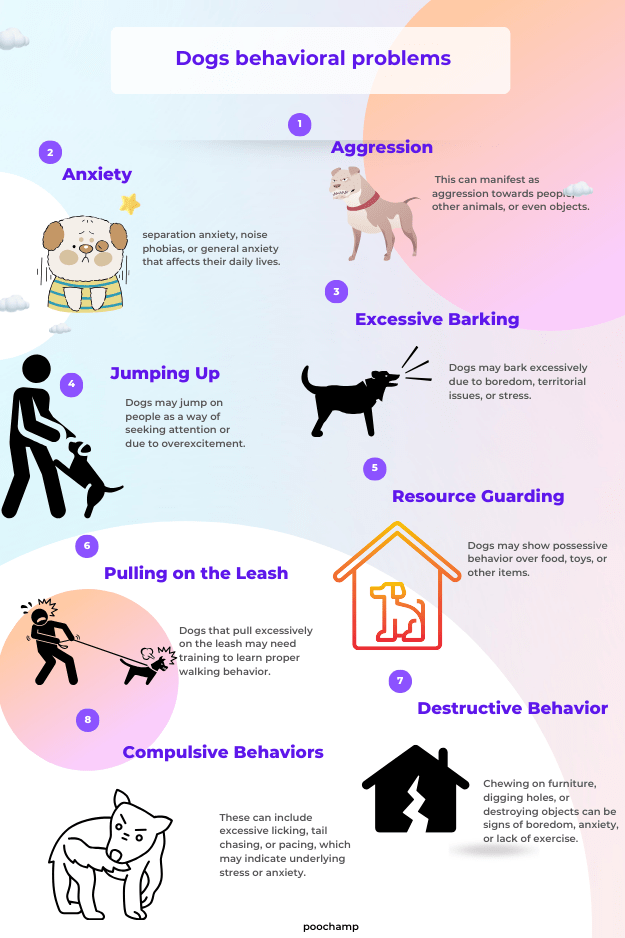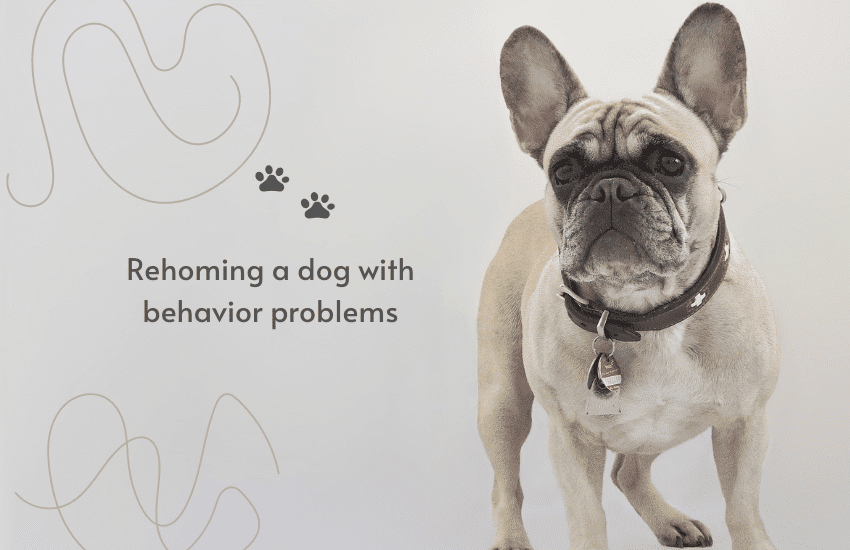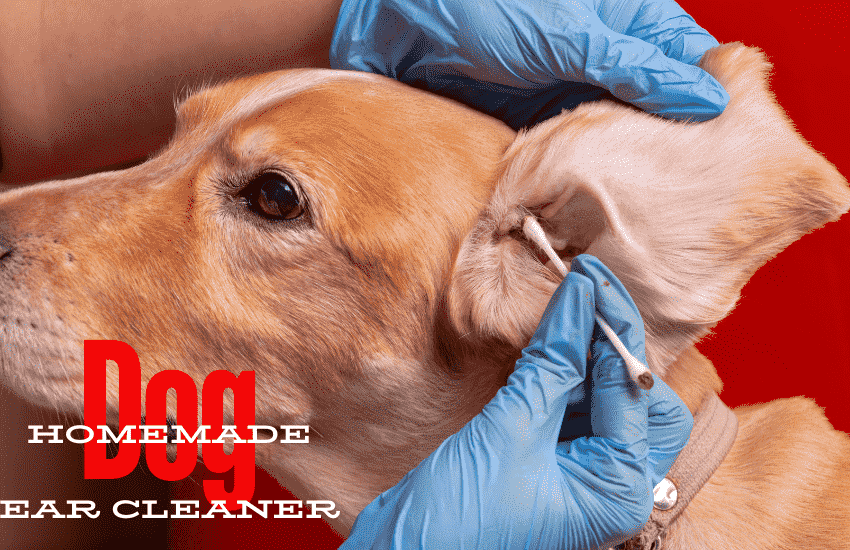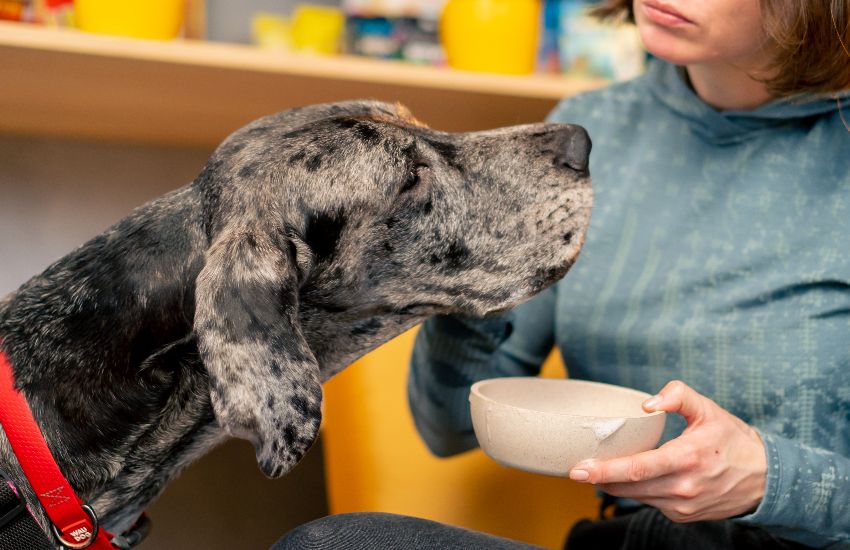Rehoming a dog with behavior problems requires patience and transparency. Seek support from professionals to address and disclose the problems.
Rehoming a dog is a challenging and emotional process, especially when the dog exhibits behavioral problems. Owners must be honest about their pet’s issues to find a suitable new home. It’s essential to involve trainers or behaviorists who can provide interventions that may improve the dog’s behavior before rehoming.
This not only makes the dog more adoptable but also helps potential new owners understand the commitment required. The process should be handled with compassion for the animal’s well-being, ensuring a smooth transition to a loving, prepared environment.
Reasons Why People Give Up Their Dog
Behavioral challenges often lead owners to rehome their dogs, as managing aggression, anxiety, or destructive actions can be overwhelming. Unprepared for the commitment that training and rehabilitation demand, many find rehoming as the most viable solution for both their family and the dog.
Deciding to rehome a dog is never an easy choice, particularly when the dog has behavioral issues. It’s a decision often made with a heavy heart and a sense of responsibility for the dog’s future, as well as the well-being of the household or individuals involved.
Many pet owners find themselves in situations where they are unable to keep their dog, despite their love and attachment. Here are some common reasons that compel owners to make this tough decision:
Lack of Time or Resources: Owners may find that the demands of their personal or professional lives leave them with inadequate time to properly care for and train a dog with behavior problems.
Financial Constraints: Behavioral issues can sometimes require professional training or medical intervention, which can be costly. Some owners may not be financially equipped to manage these expenses.
Living Situation Changes: Moving to a new home that doesn’t allow pets or has restrictions on breeds or sizes can force an owner to give up their dog.
Health Issues: Both the health of the owner and the dog can play a role. An owner’s medical condition might make it impossible to manage a dog’s behavior problems, or the dog may have health issues that exacerbate behavioral challenges.
Inadequate Match Between Dog and Owner: Sometimes, the owner’s lifestyle or the dog’s temperament are not a good fit, despite the best intentions. Behavior issues can be a manifestation of this mismatch.
Understanding Canine Behavior Problems
Behavior problems in dogs can range from mild annoyances to severe aggression, and understanding the root causes is critical for any potential solution. Some common behavior problems include:
Aggression Toward People Or Animals
Aggression is one of the most alarming behaviors a dog can exhibit, and it’s a clear sign that professional intervention is needed. This may manifest as growling, snapping, or biting when the dog feels threatened or is trying to assert dominance.
Trigger identification: Find out what provokes your dog’s aggressive responses. It could be specific situations, people, or other animals.
Professional assessment: Consult a veterinarian or a certified dog behaviorist to evaluate the aggression and determine the best course of action.
Safety measures: Implement safety protocols to prevent harm, such as using a muzzle or separate space for your dog when guests visit or during walks.
Destructive Chewing Or Digging
Destructive behavior often stems from boredom, anxiety, or lack of proper training. It’s important to redirect these tendencies to appropriate outlets.
Adequate exercise: Ensure your dog gets plenty of physical activity to reduce excess energy that might lead to destruction.
Mental stimulation: Provide puzzle toys and regular training sessions to keep your dog’s mind engaged and prevent boredom.
Chew toys and digging spots: Offer your dog appropriate items and designated areas where chewing and digging are allowed.
Excessive Barking Or Howling
While barking is a natural way for dogs to communicate, excessive noise can be a nuisance and a sign of underlying issues.
Understanding the cause: Determine the reason behind the excessive vocalization, whether it’s attention-seeking, anxiety, or alerting to perceived threats.
Consistent training: Use positive reinforcement techniques to teach your dog quiet commands and reward them for silence.
Environmental changes: Sometimes, modifying your dog’s environment can reduce triggers that cause barking or howling.
Separation Anxiety
Separation anxiety is a common issue in dogs, leading to distress and problematic behaviors when left alone.
Gradual desensitization: Slowly acclimate your dog to being alone for short periods and gradually increase the time.
Comforting items: Leave items that have your scent, such as worn clothing, to provide comfort to your dog in your absence.
Professional help: If the anxiety is severe, seeking help from a dog behaviorist or trainer can be beneficial in developing a tailored plan to ease your dog’s stress.
Dogs may jump on people as a way of seeking attention or due to overexcitement.
Resource Guarding
Dogs may show possessive behavior over food, toys, or other items.
Compulsive Behaviors
These can include excessive licking, tail chasing, or pacing, which may indicate underlying stress or anxiety.
Reactivity
Dogs may react strongly to triggers such as other dogs, strangers, or specific environments.
Pulling on the Leash
Dogs that pull excessively on the leash may need training to learn proper walking behavior.
In rehoming a dog with serious behavior issues, patience and consistency are key. Establishing a structured routine, using positive reinforcement, and seeking professional guidance when needed can lead to a successful transition for both the dog and its new family.

Should I Give Up My Aggressive Dog?
Deciding to rehome an aggressive dog is challenging. Assessing the situation with a professional trainer or behaviorist can guide responsible rehoming options for a dog with behavior issues.
Deciding to rehome a dog with aggressive behavior can be an emotionally taxing experience. It’s often fraught with guilt, concern, and the fear of judgment. Yet, safety for both the dog and the humans around it must be the priority.
When your canine companion shows signs of aggression, it’s crucial to assess the situation thoroughly before making any decisions.
Assessing The Severity Of Aggression
Understanding the level of your dog’s aggression is the first step in making an informed decision. Aggression in dogs can range from mild, warning behaviors to severe, harmful actions. Here’s what to consider:
Trigger identification: Determine what provokes your dog’s aggressive responses. Is it fear-based, protective, or related to dominance?
Frequency and context: Evaluate how often the aggression occurs and under what circumstances. Is it predictable or random?
Previous attempts at resolution: Reflect on the methods you’ve tried to curb the aggression. Have you consulted a professional trainer or behaviorist?
Potential for rehabilitation: Consider your dog’s ability to improve with proper intervention. Some dogs respond well to training, while others may not.
Options For Owners Of Aggressive Dogs
Once you’ve gauged the extent of your dog’s aggressive behavior, it’s time to explore your options. It’s a complex decision, but here are some paths you might consider:
Professional help: Engaging with a certified dog behaviorist can lead to significant improvements in your dog’s behavior.
Management strategies: Implementing strict management protocols can sometimes mitigate risks, such as keeping your dog away from situations that trigger their aggression.
Rehoming considerations: If aggression poses an unmanageable risk, finding a new home with experienced handlers might be the safest option.
Quality of life: It’s essential to evaluate if your dog is suffering or if its quality of life is compromised due to constant stress or anxiety.
Bringing a dog into your life is a commitment to care for their well-being throughout their lifetime. Aggression can be a challenging issue, but with the right approach, it’s possible to find a solution that works for both you and your dog.
Remember, there’s no shame in seeking help or making the tough decision to rehome if it means a better outcome for all involved.
Rehoming a dog with behavior problems- what should I do?
Dealing with a dog’s behavior issues before considering rehoming is crucial. Seek professional guidance from a certified dog trainer or behaviorist to address the underlying causes and work towards rehabilitation.
Assess The Behavior
Understanding your dog’s behavior problems is crucial before making any rehoming decisions. A myriad of issues can manifest in pets, from aggression to anxiety, and each has its own set of causes and potential solutions. Consulting a professional, like a veterinarian or a certified dog behaviorist, can provide valuable insights into your dog’s specific challenges.
They can help determine whether the issues are due to environmental factors, health-related problems, or lack of training, and can suggest appropriate interventions.
Create A Management Plan
Seek professional help: Collaborate with a dog trainer or behaviorist to create a personalized management plan.
Establish a routine: Consistency can provide stability and reduce stress for your dog.
Modify the environment: Remove or adapt stress-inducing factors in your home or your dog’s surroundings.
Positive reinforcement: Utilize reward-based training to encourage good behavior.
Exercise and stimulation: Ensure your dog gets ample physical and mental exercise to reduce excess energy and anxiety.
A structured approach to managing your dog’s behavior can make a significant difference. Whether it’s through training sessions or changes in the home, the goal is to create an environment where your dog can thrive.
Consider Rehoming Options
If, despite your best efforts, your dog’s behavior problems persist and you believe that a different home environment might be more suitable, explore rehoming options carefully. Rehoming should be a last resort, approached with the dog’s best interest in mind.
Research potential new homes or organizations that have the resources to handle dogs with special needs. Transparency about your dog’s behavior issues is key to finding a fitting new owner who is prepared and willing to take on the challenge.
Remember, the safety and well-being of the dog and the community should be at the forefront of any rehoming effort.
What Do No-kill Shelters Do With Aggressive Dogs?
No-kill shelters often face challenges with aggressive dogs, employing specialized training and rehabilitation to improve behavior before rehoming. They work closely with experienced adopters to ensure a safe, loving environment conducive to a dog’s specific needs.
Deciding to rehome a dog with behavioral issues can be tough, but it’s crucial to understand the role of no-kill shelters in this process. These shelters have specific protocols for dealing with aggressive dogs, balancing the safety of their staff, other animals, and the welfare of the dog in question.
Let’s dive into what these protocols typically involve.
Assessment And Evaluation
No-kill shelters often have a dedicated team that focuses on assessing the behavior of dogs that are surrendered to them. This assessment aims to:
Determine the triggers: Identifying what situations or actions provoke aggression in the dog.
Evaluate the severity: Understanding the level of aggression and whether it’s directed towards other animals, people, or both.
Check for underlying issues: Sometimes aggression can be a symptom of pain or medical problems, so a thorough veterinary examination is necessary.
Rehabilitation Programs
Once a dog has been assessed, no-kill shelters may attempt to rehabilitate the dog through various methods:
Training sessions: Professional dog trainers work on behavior modification, using positive reinforcement to encourage good behavior.
Socialization: Gradual exposure to different environments, animals, and people to improve social skills.
Environmental enrichment: Providing mental and physical stimulation to alleviate boredom and frustration that could lead to aggression.
Rehoming Strategies
If rehabilitation is successful, no-kill shelters develop strategies to find a suitable home for the dog:
Screen potential adopters: Finding an experienced owner who understands the dog’s needs and can manage its behavior.
Set clear expectations: Transparent communication about the dog’s history and behavior to prevent future incidents.
Provide ongoing support: Offering resources and advice to new owners to aid in the dog’s transition to its new home.
When Rehabilitation Isn’t An Option
In situations where rehabilitation isn’t successful or possible due to the severity of the aggression, no-kill shelters must make difficult decisions:
Sanctuary placement: Some dogs may live out their lives in a sanctuary setting where they can be managed safely away from the public.
Quality of life evaluation: If the dog is suffering or poses a significant risk to others, humane euthanasia may be considered as a last resort.
No-kill shelters are committed to saving lives, but they also prioritize the safety and well-being of all involved. Their approach to handling aggressive dogs is multifaceted, aiming to rehabilitate and rehome whenever possible while making compassionate choices for the dogs that cannot be safely placed in a home environment.
contact The Shelter You Adopted From
Reach out to the shelter or breeder where your dog was adopted to discuss rehoming options. They may offer assistance or resources tailored for dogs with behavioral challenges.
Discovering your furry companion isn’t the perfect fit can be a heart-wrenching realization. Before you let the worry weigh you down, remember that reaching out to the original shelter or breeder is a responsible first step. These organizations often have policies or support systems in place to help with rehoming or addressing behavioral issues.
Why Reaching Out Is Essential
Support and resources: Many shelters and breeders offer post-adoption support, including training resources or advice on managing behavioral problems.
Familiarity with the dog: They may better understand the dog’s background and potential reasons for its behavior issues.
Policy compliance: Some adoption agreements require you to inform them if you can no longer care for the pet.
Rehoming assistance: Shelters and breeders may help facilitate rehoming, ensuring a smoother transition for the dog.
Navigating The Conversation
Engaging in a dialogue with the shelter or breeder about your dog’s behavior is not an admission of failure but a sign of your commitment to the well-being of your pet. Be honest about the challenges you’re facing and the steps you’ve already taken to resolve them.
This transparency enables them to provide the most effective assistance possible.
How Do Dogs Feel About Rehoming?
Dogs experiencing rehoming may display a range of emotions, often feeling confused or stressed. Rehoming a dog with behavior problems requires patience and understanding, as they adapt to new environments and owners.
Understanding Canine Emotions During Rehoming
Rehoming a dog with behavior issues isn’t just a significant event for the owner; it’s a profound change for the canine as well. Dogs, much like humans, experience a range of emotions, and the upheaval of rehoming can be both confusing and stressful for them.
It’s essential to acknowledge their feelings during this transition period and provide the necessary support to help them adjust to their new environment.
Signs Of Stress And Anxiety In Dogs
Changes in appetite: When dogs feel anxious, they might eat less or refuse food altogether.
Altered sleep patterns: Stress can disrupt a dog’s sleep, leading to restlessness or excessive sleeping.
Behavior changes: Dogs may exhibit behaviors such as increased barking, chewing, or aggression when they’re feeling uneasy.
Body language: Look for signs like tucked tails, flattened ears, and avoidance behaviors, which can indicate discomfort or fear.
The Bond With Previous Owners
A dog’s bond with its owner is built on routine, trust, and affection. When rehomed, dogs can experience a sense of loss and confusion as they navigate the absence of their previous family. This bond isn’t forgotten overnight, and it’s important to be patient as the dog mourns its past connections and starts to form new ones.
Adapting To A New Environment
Exploration and curiosity: Initially, a dog may be curious about its new surroundings, sniffing around and exploring the new space.
Seeking comfort: Dogs often look for comfort in their new home, which might include finding a favorite spot to relax or being close to their new owners.
Establishing a routine: As dogs adapt, they thrive on a consistent routine to feel secure in their new home.
The Importance Of Patience And Consistency
When a dog is rehomed, it’s crucial for the new owner to be both patient and consistent. Dogs rely on predictability to feel safe, and establishing a new routine can help them understand what to expect in their new life.
Consistency in training, feeding, and playtime creates a sense of stability for the dog, which can ease the transition and help build a new, loving bond.
Fostering New Relationships
Building a relationship with a rehomed dog may take time, especially if the dog has behavioral issues. It’s about creating a foundation of trust through positive reinforcement, understanding, and time spent together. As the dog grows more comfortable and starts to understand that it is in a safe place, the seeds of a strong, new relationship are sown, leading to a future filled with companionship and mutual respect.
Final Thoughts On Rehoming Aggressive Dogs:
The decision to rehome should be made with care, considering the well-being of the dog and the safety of the community. Each case is unique, and what might be the right decision for one dog may not be suitable for another.
It’s essential to approach this situation with empathy, responsibility, and a commitment to finding the best possible outcome for all involved.
Frequently Asked Questions
How To Rehome A Dog With Behavioral Issues?
Evaluate the dog’s behavior and seek professional training to address issues. Disclose all behavioral challenges when seeking a new home. Utilize social media and pet adoption platforms to reach potential adopters. Screen interested parties thoroughly. Consider rescue organizations specializing in behaviorally challenged dogs.
Do Dogs Feel Abandoned When Rehomed?
Dogs can experience feelings of abandonment when rehomed. They may show signs of stress or anxiety as they adjust to their new environment.
How Traumatic Is It For A Dog To Change Owners?
Changing owners can be stressful for dogs, as they bond with caregivers. The impact varies depending on the dog’s temperament, age, and adaptability. Proper introduction and consistency in routine can ease the transition.
Should I Rehome My Aggressive Dog?
Rehoming an aggressive dog may be considered if behavior modification and professional training aren’t successful, especially when safety is at risk. Consult with a veterinarian or animal behaviorist before deciding.
Conclusion
Rehoming a dog with behavioral issues can be challenging, yet deeply rewarding. It requires patience, understanding, and the right approach. By embracing consistency and compassion, you can help your canine companion find a loving, suitable new home. Remember, every step towards positive change creates a ripple of hope for a better future for these deserving dogs.







